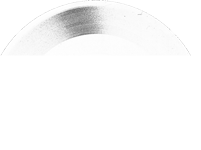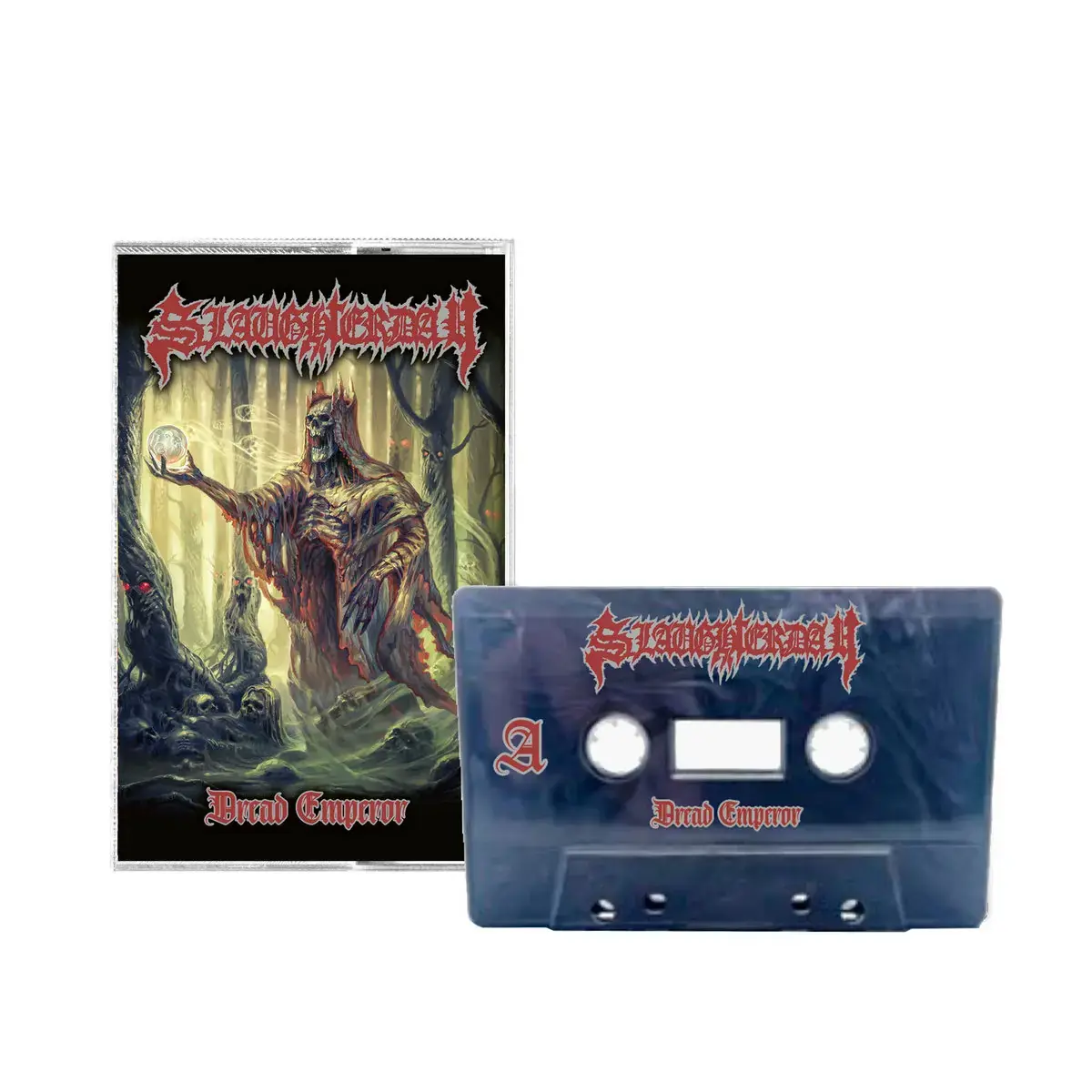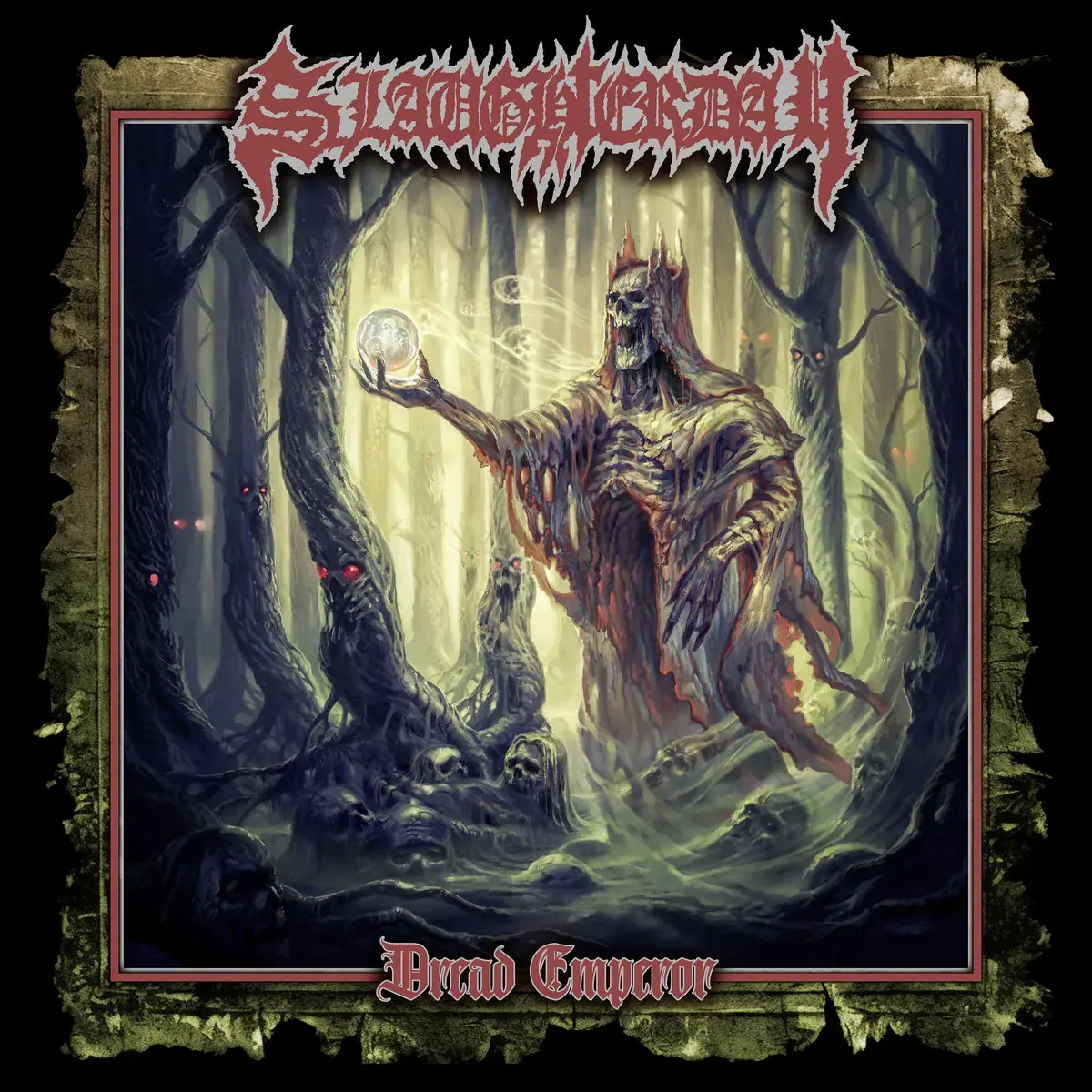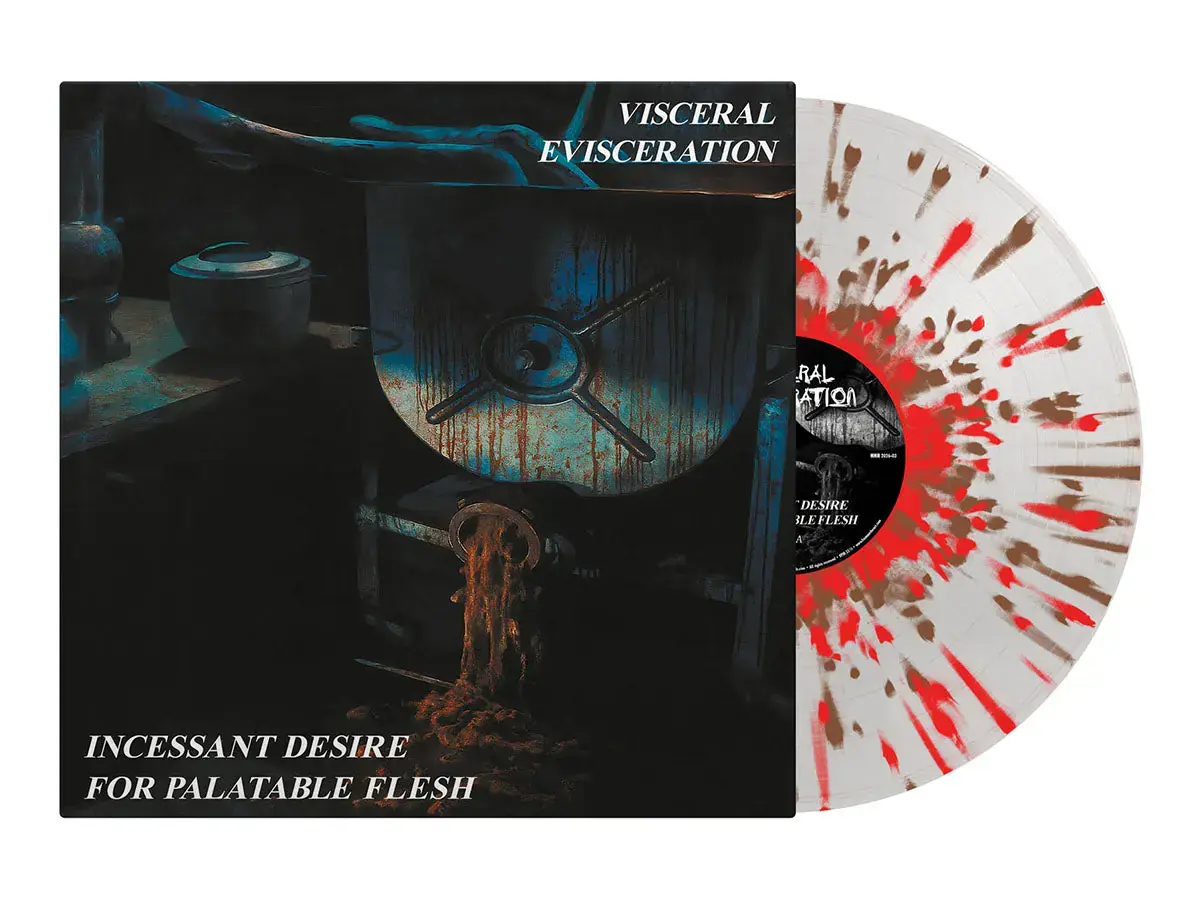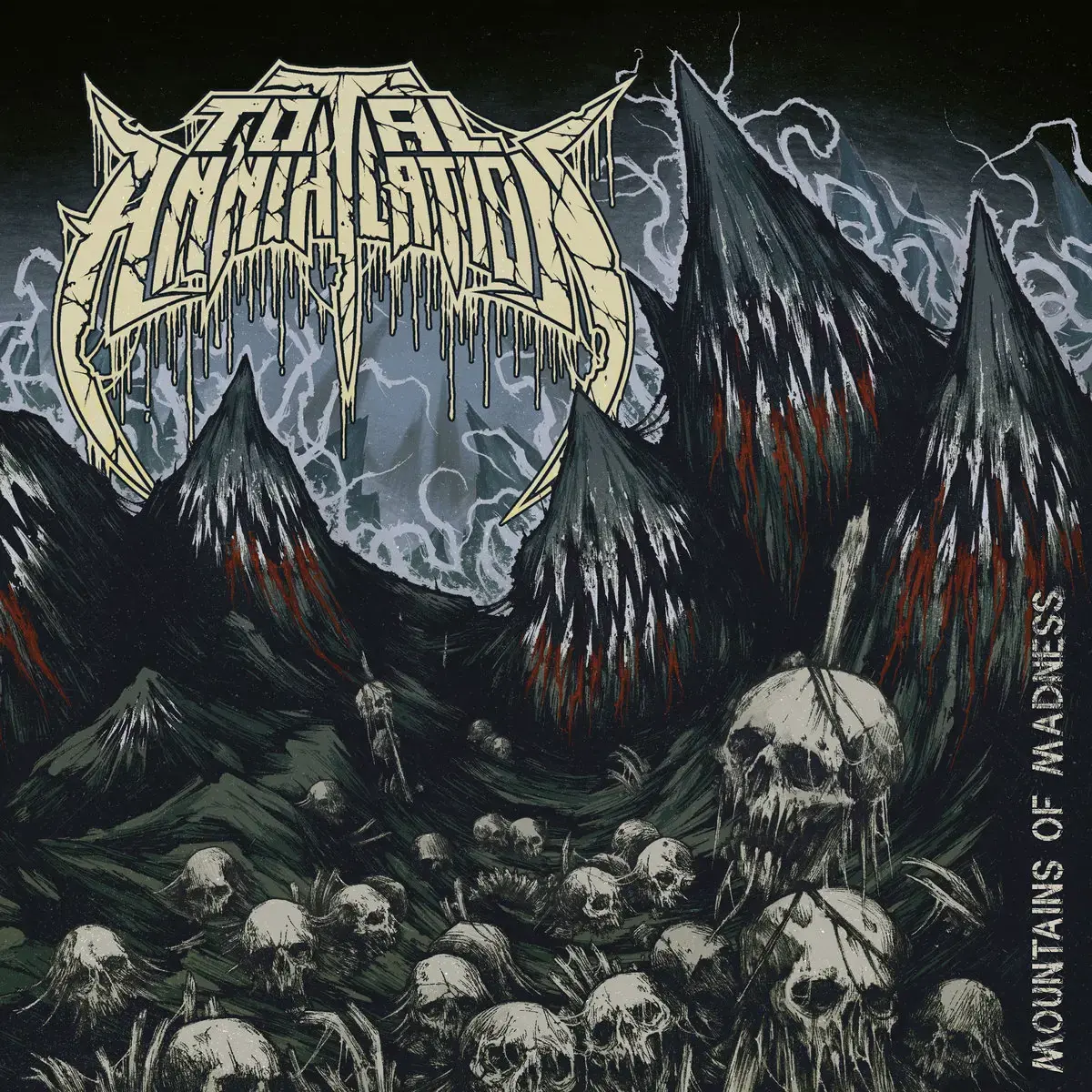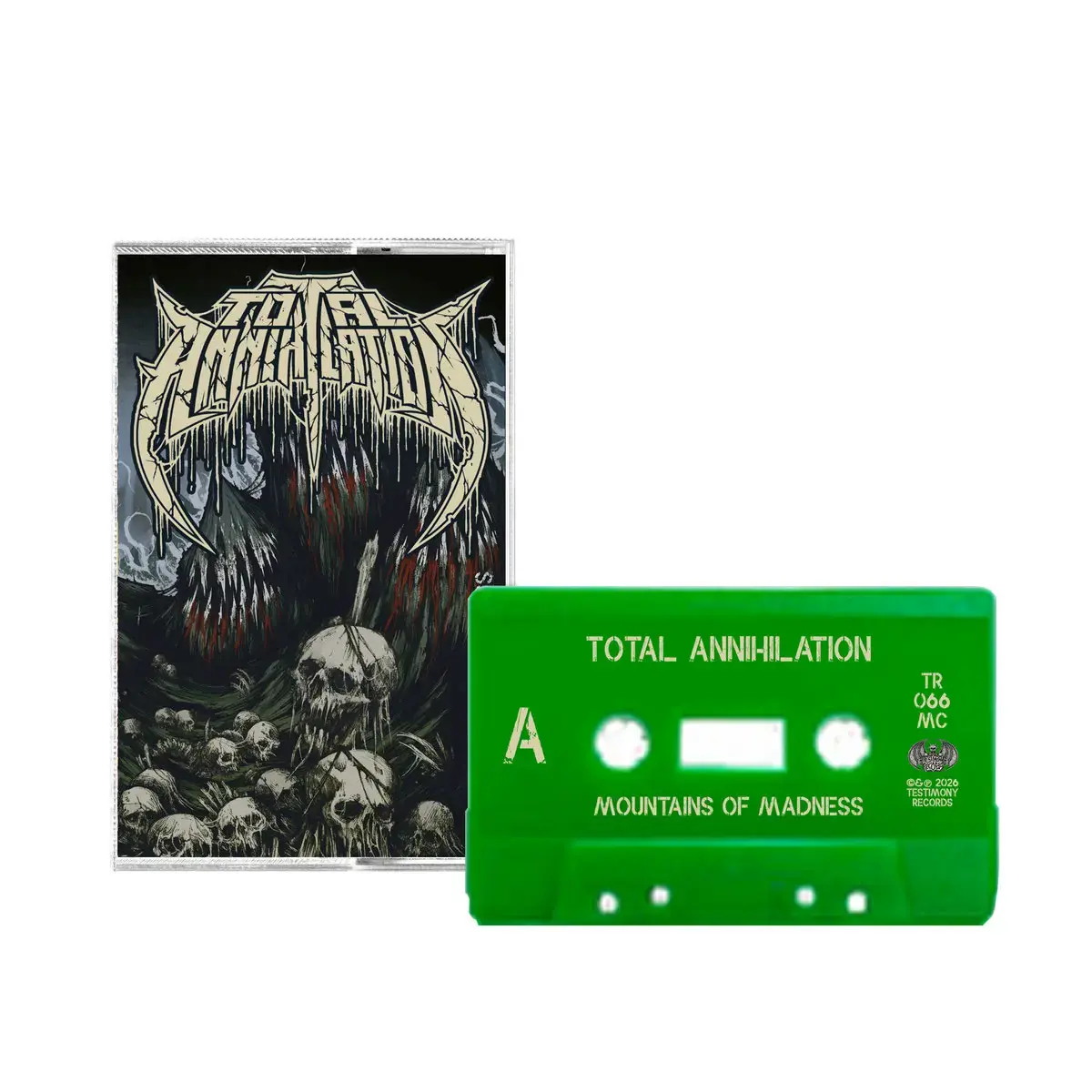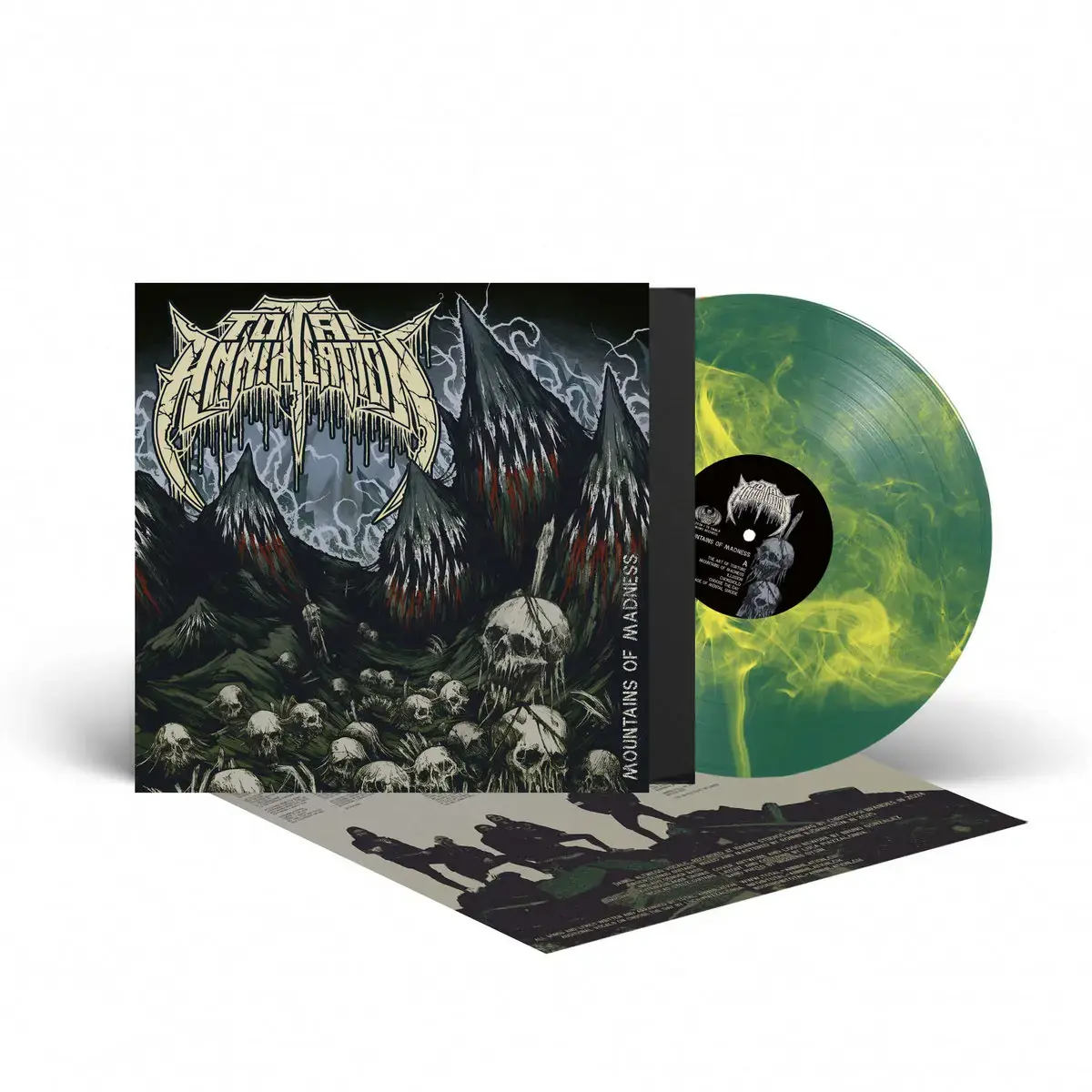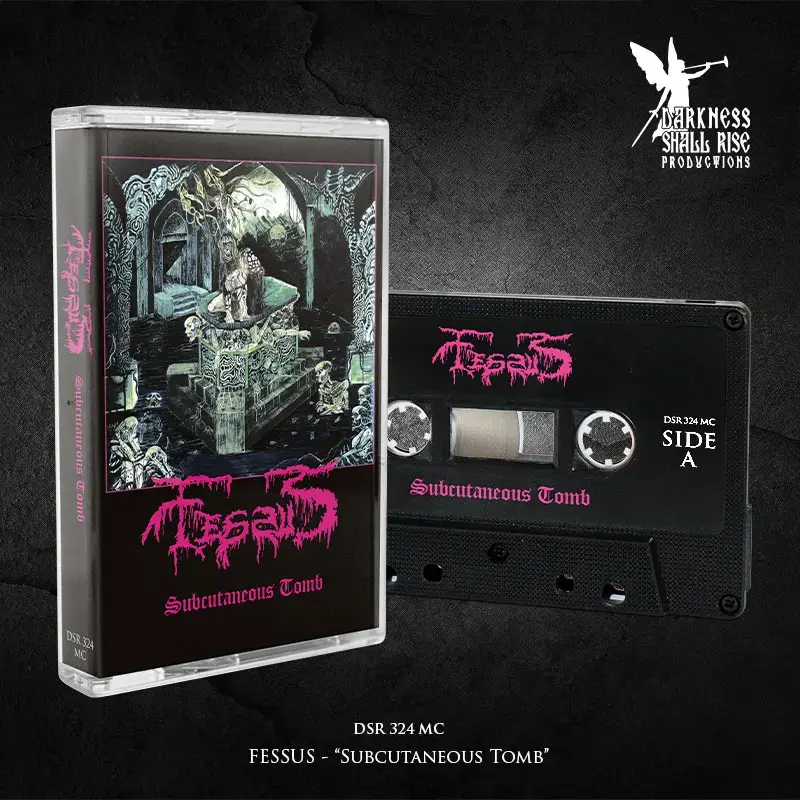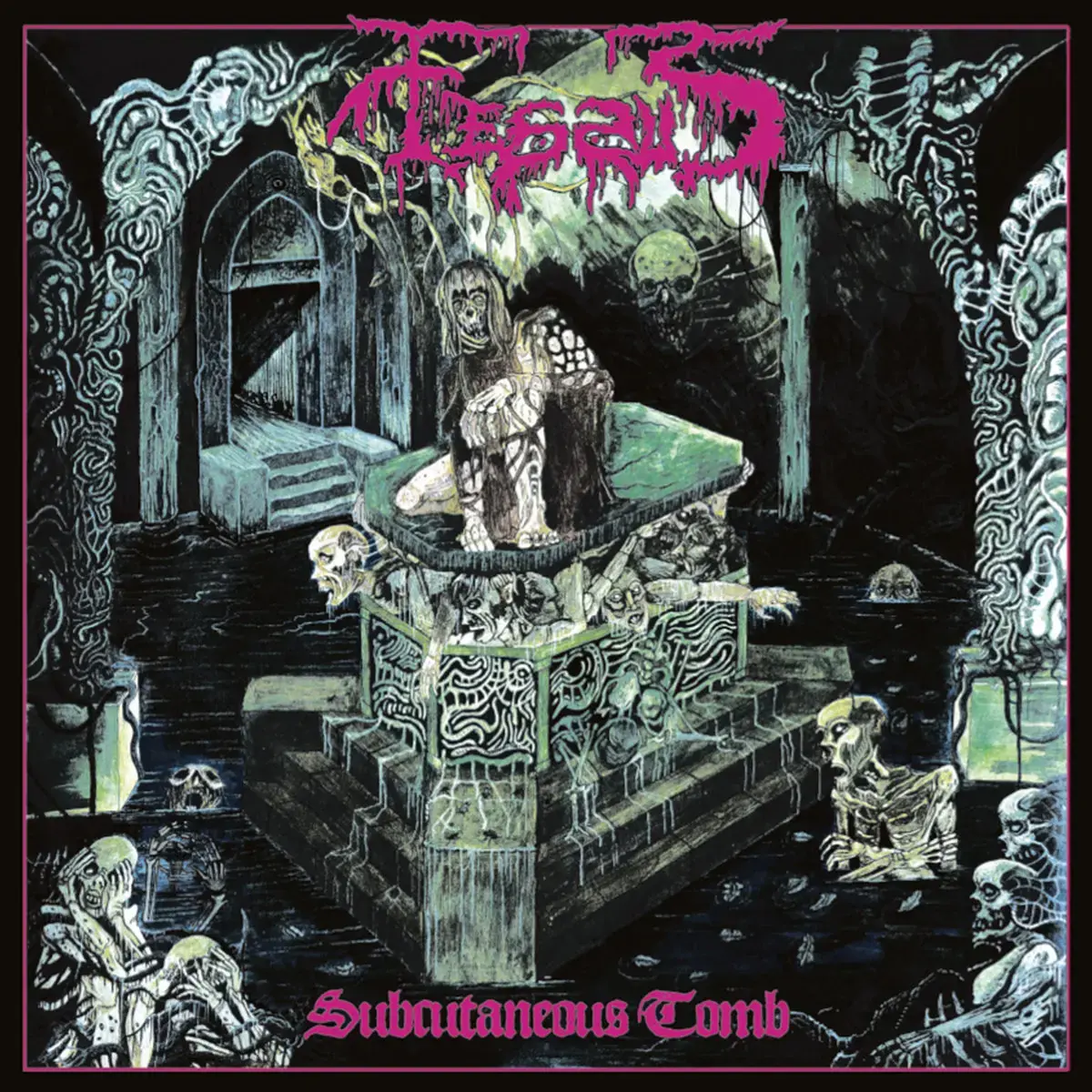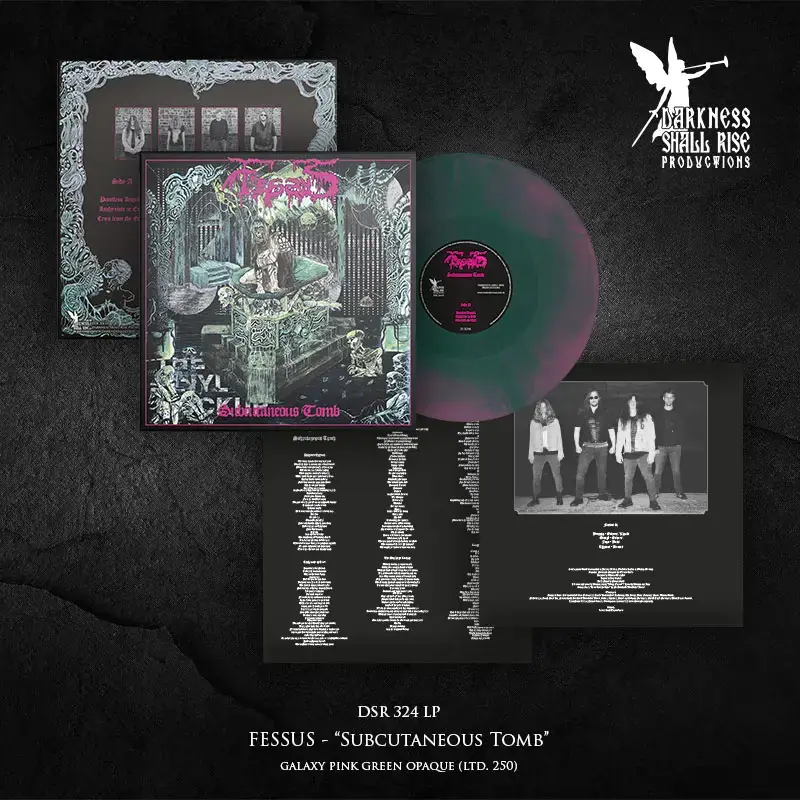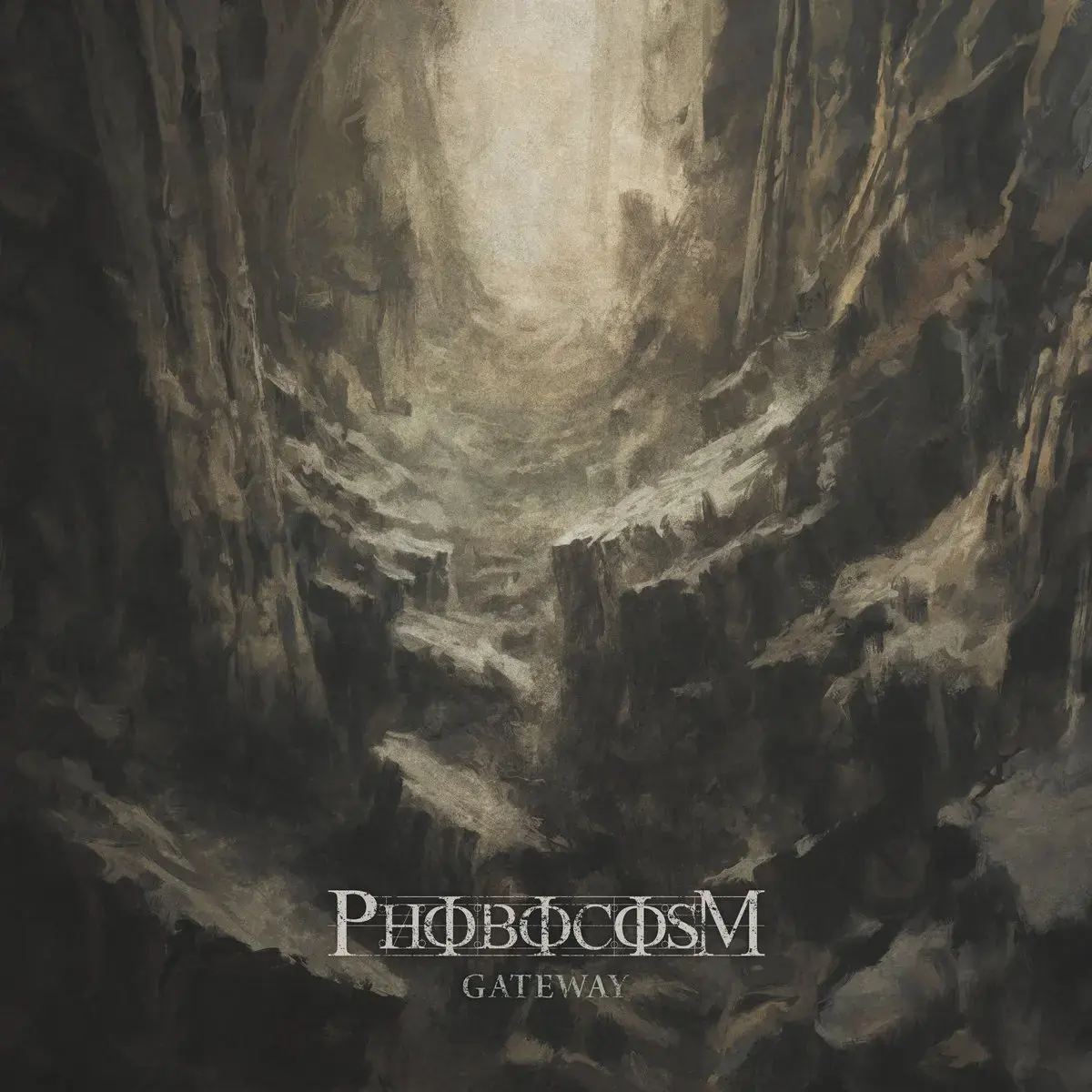Death Metal
Death metal is the most technically challenging and perhaps the most influential extreme metal genre, and has evolved from its 1980s death metal origins into a diverse global phenomenon encompassing numerous subgenres, regional scenes and artistic movements. From its humble beginnings in Florida's garages to a global phenomenon with millions of streaming listeners, death metal has maintained its artistic integrity while achieving unprecedented mainstream recognition in 2025.
The Genesis of Brutality (1983-1987)
The year 1983 marked a pivotal moment in extreme music history when two bands on opposite coasts of America simultaneously began crafting what would become death metal. In San Francisco, Possessed was developing their aggressive sound that would coin the term "death metal" in their 1983 song of the same name. Meanwhile, in Florida, a young Chuck Schuldiner was forming Death (originally called Mantas), laying the groundwork for what many consider the genre's definitive sound.
Possessed's 1985 album "Seven Churches" stands as the first true death metal release, featuring the heavily distorted guitars, blast beat drumming, and guttural vocals that would define the genre. The album's raw production and horror-themed lyrics established the template that countless bands would follow. However, it was Death's "Scream Bloody Gore" in 1987 that truly crystallized the death metal formula, combining technical precision with an accessibility that would influence generations of musicians.
These early pioneers drew inspiration from thrash metal acts like Slayer and the proto-extreme sounds of Venom, but pushed the boundaries far beyond what their predecessors had imagined. The guitar work became more dissonant and technically demanding, the drumming incorporated blast beats borrowed from hardcore punk, and the vocals descended into growls that seemed to emerge from the depths of hell itself.
Florida's Golden Age: The Morrisound Era (1988-1993)
The late 1980s and early 1990s witnessed death metal's first golden age, centered around Tampa Bay, Florida. The region's warm climate allowed year-round practice in garages, while affordable living costs meant musicians could focus on their art without the financial pressures that plagued scenes in more expensive cities. However, the true catalyst for Florida's dominance was Morrisound Recording Studios and its legendary producer Scott Burns.
Burns, working primarily between 1987 and 1997, shaped the "Florida sound" through over 100 extreme metal recordings. His production techniques achieved the seemingly impossible: crystal-clear recordings that preserved every technical detail while maintaining the chaotic brutality that defined death metal. Albums like Morbid Angel's "Altars of Madness" (1989), Obituary's "Slowly We Rot" (1989), and Cannibal Corpse's breakthrough releases set new standards for both technical proficiency and commercial viability within extreme music.
The Florida scene produced what fans now call "The Big Four" of death metal: Death, Morbid Angel, Obituary, and Cannibal Corpse. Each band contributed unique elements to the genre's development. Death's progressive evolution under Chuck Schuldiner's leadership introduced complex song structures and philosophical lyrics. Morbid Angel brought occult themes and unprecedented technical brutality. Obituary pioneered the integration of groove elements that made death metal more accessible. Cannibal Corpse achieved commercial success while maintaining extreme gore-themed content that pushed societal boundaries.
Morrisound Studios recently received a Historical Marker in 2025, cementing its cultural significance in American music history. The studio's influence extended far beyond Florida, with bands from around the world making pilgrimages to Tampa to capture the legendary "Florida sound."
International Expansion: Sweden's Dual Identity (1989-1995)
While Florida dominated the early death metal landscape, Sweden was quietly developing its own distinctive approaches that would prove equally influential. The Swedish scene split into two geographically and stylistically distinct movements, each contributing essential elements to death metal's evolution.
Stockholm's death metal scene centered around Sunlight Studios and producer Tomas "Doctor Midrange" Skogsberg, who created the legendary "buzzsaw" sound. This approach utilized Boss HM-2 Heavy Metal pedals with all settings maximized, detuned guitars, and analog recording techniques that emphasized mid-range frequencies. The result was a raw, organic sound that contrasted sharply with Florida's polished production. Entombed's "Left Hand Path" (1990) defined this aesthetic, influencing bands like Dismember, Grave, and Unleashed to create some of death metal's most enduring classics.
In contrast, Gothenburg developed a melodic approach that would revolutionize extreme music's commercial potential. Bands like At the Gates, In Flames, and Dark Tranquillity incorporated Iron Maiden-style dual guitar harmonies into death metal frameworks, creating music that was simultaneously brutal and beautiful. At the Gates' "Slaughter of the Soul" (1995) became the template for melodic death metal, its influence extending to American metalcore bands and helping to introduce death metal elements to mainstream audiences.
The Gothenburg sound emerged from tight-knit communities where band members literally shared bus routes to school, fostering a collaborative environment that encouraged musical experimentation. This scene's emphasis on melody without sacrificing aggression proved that death metal could evolve beyond its purely brutal origins while maintaining its essential character.
New York's Technical Brutality: The Birth of Brutalization
The East Coast American scene, centered around New York and particularly Long Island, developed death metal's most technically demanding and brutally precise approach. The region's hardcore punk heritage and urban aggression created a unique fusion that pushed both complexity and extremity to new heights.
Suffocation single-handedly invented brutal death metal with their 1991 masterpiece "Effigy of the Forgotten." The album introduced the first "slam" riffs in songs like "Liege of Inveracity," featured Frank Mullen's deeper growling style that influenced countless vocalists, and showcased Terrance Hobbs' technical guitar work that set new standards for complexity within extreme music. The band's approach emphasized precision, brutality, and technical innovation in equal measure.
Immolation and Incantation completed New York's brutal death metal trinity. Immolation's "Dawn of Possession" (1991) showcased Robert Vigna's atonal guitar approach and dissonant technical arrangements that would influence modern experimental death metal. Incantation's "Onward to Golgotha" (1992) merged death metal with doom elements, creating atmospheric brutality that prioritized mood and darkness over pure speed.
This regional scene's emphasis on technical precision and extreme brutality created a template that influenced Quebec's technical death metal scene and laid the groundwork for the genre's continued evolution toward ever-greater complexity.
The Technical Revolution: Jazz Meets Extremity (1990-2000)
The early 1990s witnessed death metal's most significant artistic evolution as bands began incorporating elements from jazz, classical music, and progressive rock. This technical death metal movement challenged the genre's perceived limitations while maintaining its extreme foundation.
Atheist led this revolution with "Piece of Time" (1989), widely considered the first technical death metal album. The band's jazz fusion influences and complex rhythmic structures proved that extreme music could be both brutal and intellectually sophisticated. Their follow-up, "Unquestionable Presence" (1991), further developed these concepts with compositions that required exceptional musicianship to perform.
Cynic's "Focus" (1993) represented technical death metal's most radical experiment, incorporating vocoder vocals, acoustic passages, and full jazz fusion integration. The album initially confused both death metal and progressive rock audiences but eventually gained recognition as a revolutionary masterpiece that expanded extreme music's artistic possibilities.
Death's evolution under Chuck Schuldiner paralleled the technical movement's development. Albums like "Human" (1991) and "Individual Thought Patterns" (1993) recruited jazz musicians and progressively abandoned gore themes in favor of philosophical exploration. Schuldiner's willingness to evolve artistically while maintaining death metal's essential elements made him a revered figure whose influence extends far beyond the genre's boundaries.
European contributions to technical death metal came primarily from Dutch band Pestilence, whose "Testimony of the Ancients" (1991) demonstrated that the movement wasn't exclusively American. The album's sophisticated compositions and jazz-influenced solos proved that technical innovation could emerge from any region with sufficient musical vision.
Subgenre Diversification: Expanding the Extreme Spectrum
Death metal's inherent diversity led to numerous subgenre developments throughout the 1990s and 2000s, each exploring different aspects of extremity and technical possibility.
Melodic Death Metal achieved commercial viability while maintaining death metal's essential characteristics. The "Gothenburg Big Three" – At the Gates, In Flames, and Dark Tranquillity – created a template that influenced American metalcore and brought death metal elements to mainstream audiences. This subgenre proved that melody and aggression could coexist without compromising either element's integrity.
Brutal Death Metal emerged from New York's technical scene, emphasizing extreme heaviness and precision. Suffocation's innovations spawned an entire movement that included slam death metal, characterized by groove-oriented "slam" riffs and ultra-deep vocals. This subgenre maintained death metal's underground credibility while pushing physical and technical boundaries.
Progressive Death Metal evolved from the technical movement, incorporating clean vocals, atmospheric elements, and extended compositions. Bands like Opeth revolutionized the genre by seamlessly blending death metal with folk, progressive rock, and ambient music. Edge of Sanity's "Crimson" (1996) featured a 40-minute single composition that demonstrated progressive death metal's compositional ambitions.
Old School Death Metal Revival emerged in the 2010s as a reaction against over-produced modern metal. Bands like Blood Incantation, Tomb Mold, and Gatecreeper embraced analog production aesthetics while incorporating modern songwriting sophistication. This movement gained significant momentum during the COVID-19 pandemic, attracting listeners seeking authentic underground experiences.
Death Metal's 2025 Renaissance: Mainstream Recognition Without Compromise
The year 2025 represents death metal's most successful period in terms of both artistic achievement and commercial recognition. Streaming platforms have revealed the genre's surprising popularity, with Gojira approaching 3 million monthly Spotify listeners – numbers previously thought impossible for extreme metal. This mainstream acceptance hasn't compromised the genre's artistic integrity, as evidenced by the continued success of uncompromising acts.
Modern production techniques have achieved unprecedented clarity while preserving death metal's essential brutality. AI-assisted mixing and mastering, spatial audio processing, and cloud-based collaboration have democratized professional-quality recording, enabling bedroom producers to create albums that rival major label releases. This technological accessibility has fostered a new generation of innovative bands who combine vintage aesthetics with modern precision.
The festival circuit has embraced death metal's growing popularity, with major events featuring 100+ bands annually and death metal acts headlining mainstream festivals. Venues previously inaccessible to extreme music, including amphitheaters and arenas, now regularly host death metal performances. This expansion hasn't diluted the underground's vitality, as smaller venues continue supporting emerging artists and experimental acts.
Contemporary death metal addresses complex themes reflecting modern concerns. Environmental destruction, mental health awareness, social justice, and philosophical inquiry have largely replaced the gore and horror themes that dominated the genre's early years. This thematic evolution demonstrates death metal's maturation from shock value entertainment to legitimate artistic expression capable of addressing society's most pressing issues.
Cultural Impact and Academic Recognition
Death metal has achieved academic legitimacy through scholarly research demonstrating its cultural significance and psychological benefits. Universities worldwide now offer courses examining extreme music's sociological impact, while researchers have documented the positive emotional responses death metal generates in listeners, including empowerment, catharsis, and transcendence.
The genre's influence extends far beyond music, affecting recording technology, festival culture, and global artistic expression. Death metal's emphasis on technical precision has driven innovations in musical equipment and recording techniques that benefit all genres. Its underground ethos has inspired independent music scenes worldwide, while its global reach has facilitated cultural exchange between previously isolated communities.
Regional variations reflect local cultural concerns while maintaining death metal's universal appeal. Scandinavian bands explore mythology and environmental themes, Eastern European acts address historical trauma and political resistance, and South American groups examine social inequality and cultural identity. This diversity within unity demonstrates death metal's capacity to serve as both local cultural expression and global artistic language.
Essential Listening: The Death Metal Canon
Understanding death metal requires familiarity with certain essential albums that define the genre's evolution and excellence. These releases represent crucial developments in death metal's artistic and technical progression.
Foundation Era (1985-1990):
Possessed's "Seven Churches" established death metal's basic template, while Death's "Scream Bloody Gore" refined it into genre-defining perfection. Morbid Angel's "Altars of Madness" demonstrated technical possibilities within extreme frameworks, and Obituary's "Slowly We Rot" introduced groove elements that expanded death metal's appeal.
Classic Era (1990-1995):
Suffocation's "Effigy of the Forgotten" invented brutal death metal, while Entombed's "Left Hand Path" defined Swedish death metal's raw aesthetic. Death's "Human" showcased progressive possibilities, and At the Gates' "Slaughter of the Soul" created the melodic death metal template.
Technical Innovation (1990-2000):
Atheist's "Unquestionable Presence" proved jazz and death metal compatibility, while Cynic's "Focus" pushed progressive boundaries to their limits. Immolation's "Dawn of Possession" explored dissonant extremity, and Gorguts' "Obscura" later demonstrated experimental possibilities.
Modern Classics (2000-2025):
Opeth's "Blackwater Park" perfected progressive death metal fusion, while Portal's "Outre" explored dissonant atmospheric extremity. Blood Incantation's "Hidden History of the Human Race" represents the old school revival's artistic peak, combining vintage aesthetics with modern songwriting sophistication.
The Future of Death Metal
Death metal in 2025 stands at a unique crossroads, having achieved mainstream recognition while maintaining underground credibility. The genre's future appears secure through strong youth engagement, technological adaptation, and continued creative innovation. Educational resources and online communities have democratized access to death metal's history and techniques, ensuring new generations understand and contribute to its evolution.
Emerging trends suggest continued diversification and experimentation. Atmospheric death metal explores ambient and post-metal influences, while technical innovation pushes complexity boundaries ever further. Cross-cultural collaboration enabled by digital technology creates unprecedented fusion possibilities, suggesting death metal's global influence will continue expanding.
The genre's academic recognition and therapeutic applications indicate its transformation from underground curiosity to legitimate cultural phenomenon. Death metal's emphasis on technical excellence, artistic integrity, and emotional authenticity provides a counterbalance to commercial music's emphasis on accessibility and immediate gratification.
For newcomers, death metal offers unparalleled technical complexity, philosophical depth, and emotional intensity within popular music's most demanding framework. For veterans, the genre's continued evolution ensures ongoing discovery and artistic challenge. Death metal's journey from Tampa garages to global streaming success demonstrates extreme music's capacity for growth without compromise, establishing it as one of popular music's most vital and enduring forms.
All “Death Metal” products
Preorder. Release 20 March 2026
Preorder. Release 20 March 2026
Preorder. Release 20 March 2026
Preorder. Release 13 February 2026
Preorder. Release 13 February 2026
Preorder. Release 13 February 2026
Preorder. Release 13 February 2026
Preorder. Release 13 February 2026
Preorder. Release 23 January 2026
Preorder. Release 23 January 2026
Preorder. Release 23 January 2026
Preorder. Release 23 January 2026
Preorder. Release 16 January 2026
Preorder. Release 16 January 2026
Preorder. Release 16 January 2026
Preorder. Release 16 January 2026
Preorder. Release 19 December 2025
Preorder. Release 19 December 2025
Preorder. Release 19 December 2025
Preorder. Release 19 December 2025
Preorder. Release 19 December 2025
Preorder. Release 19 December 2025
Preorder. Release 19 December 2025
Preorder. Release 19 December 2025
